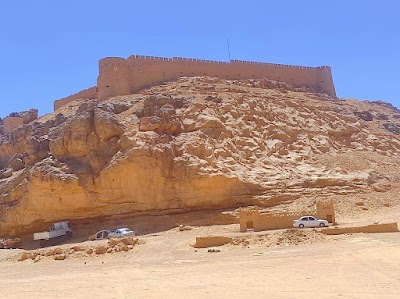Ghat Archaeological Site (الموقع الأثري في غات)
Overview
The Ghat Archaeological Site, nestled in the tranquil Ghat District of Libya, invites travelers on an enchanting journey back in time. Renowned for its remarkable historical significance and captivating surroundings, this site provides international visitors with a unique glimpse into North Africa's ancient past.
A Cultural Crossroads
Ghat, an ancient oasis town, has served as a pivotal cultural crossroads for millennia. Strategically located along the trans-Saharan trade routes, Ghat once bustled with traders transporting gold, salt, and other precious goods across the desert. This vibrant exchange made Ghat a melting pot of diverse cultures, languages, and traditions. The Ghat Archaeological Site encapsulates this rich history, showcasing relics that date back thousands of years.
The Garamantes Civilization
As you wander through the site, remnants from the Garamantian civilization, which thrived in the region from around 500 BC to 700 AD, come to life. The Garamantes were innovative people, celebrated for their advanced irrigation techniques that transformed arid landscapes into fertile fields. You can still witness evidence of their ingenuity in the ruins of ancient irrigation systems and captivating rock carvings (petroglyphs) that adorn the area. These carvings depict the daily lives, rituals, and achievements of the Garamantes, offering an intimate look into a sophisticated yet enigmatic culture.
Stunning Rock Art
One of the standout features of the Ghat Archaeological Site is the breathtaking rock art found in the Acacus Mountains, a UNESCO World Heritage Site. Dating back as far as 12,000 years, these exquisite rock paintings and carvings illustrate a variety of scenes, including hunting expeditions, livestock herding, and spiritual ceremonies. This art vividly portrays how the Sahara was once a lush, green savanna before transforming into the vast desert we see today. The remarkable contrast between the art and the modern landscape offers a humbling perspective on the Earth’s evolving climate and geography.
Exploring Ksar Ghat
Modern-day adventurers are also drawn to explore the nearby Ksar Ghat, an ancient fortified village. Walking through its narrow, winding alleyways feels like stepping into a historical narrative. The ksar (fortification) served as a protective haven for its inhabitants against invasions and natural adversities, embodying the resilience and strategic acumen of those who once lived there. Constructed primarily from mud-brick, these structures blend harmoniously with the desert environment, providing a picturesque and authentic glimpse into traditional Saharan architecture.
Natural Beauty
Beyond its historical and archaeological treasures, Ghat is equally celebrated for its stunning natural beauty. The surrounding desert and mountains create an awe-inspiring backdrop, with dramatic landscapes that evoke both tranquility and majesty. The golden dunes and rugged terrain of the Acacus Mountains offer spectacular vistas, especially during sunrise and sunset when the landscape is bathed in hues of red and gold. These moments provide the perfect opportunity to reflect on the timeless beauty and resilience of this extraordinary region.
Experiencing Tuareg Culture
Another fascinating aspect for visitors is the local Tuareg culture. The Tuareg people have inhabited the Sahara for centuries and are often referred to as "the Blue People" due to their traditional indigo-dyed clothing. Their presence adds a vibrant, living dimension to the archaeological site, bridging the ancient past with the present. Tourists can immerse themselves in Tuareg customs, music, crafts, and even partake in traditional tea ceremonies. These cultural interactions enrich the visit, transforming it into an experience that celebrates both history and living culture.
For foreign tourists, a visit to the Ghat Archaeological Site is a captivating narrative of human ingenuity, resilience, and the enduring beauty of nature. Whether you're a history enthusiast eager to delve into ancient civilizations, an art lover fascinated by prehistoric petroglyphs, or a nature lover seeking the serene beauty of the Sahara, Ghat offers something profoundly enriching. It’s a place where history, culture, and nature converge, promising an unforgettable journey into the heart of the desert.



